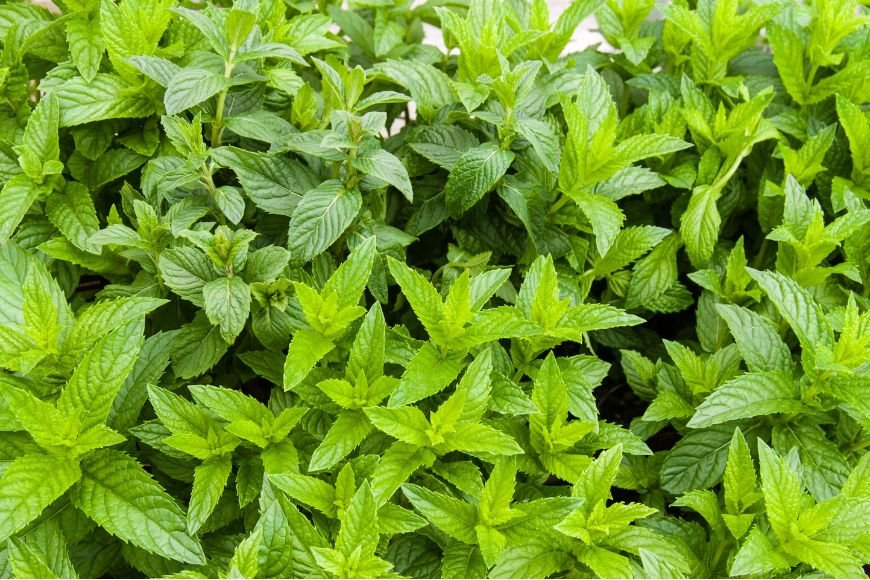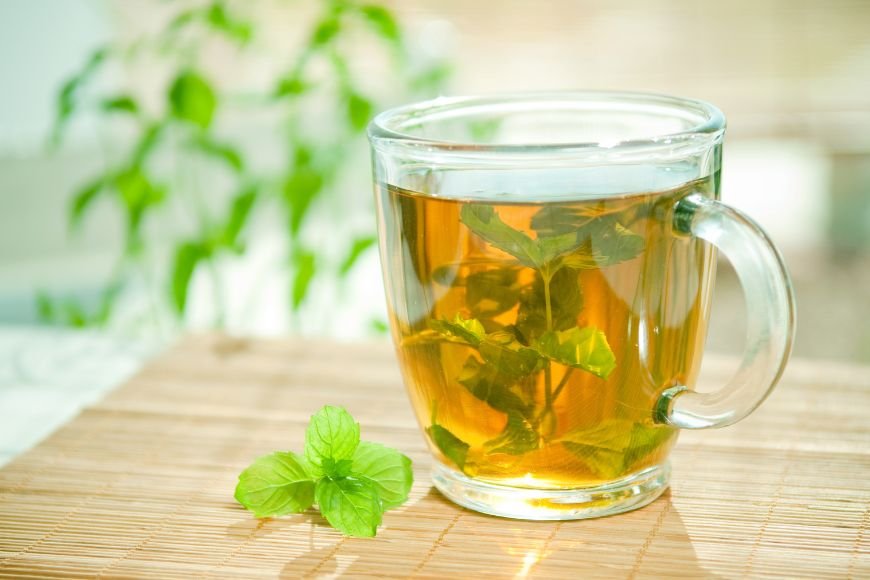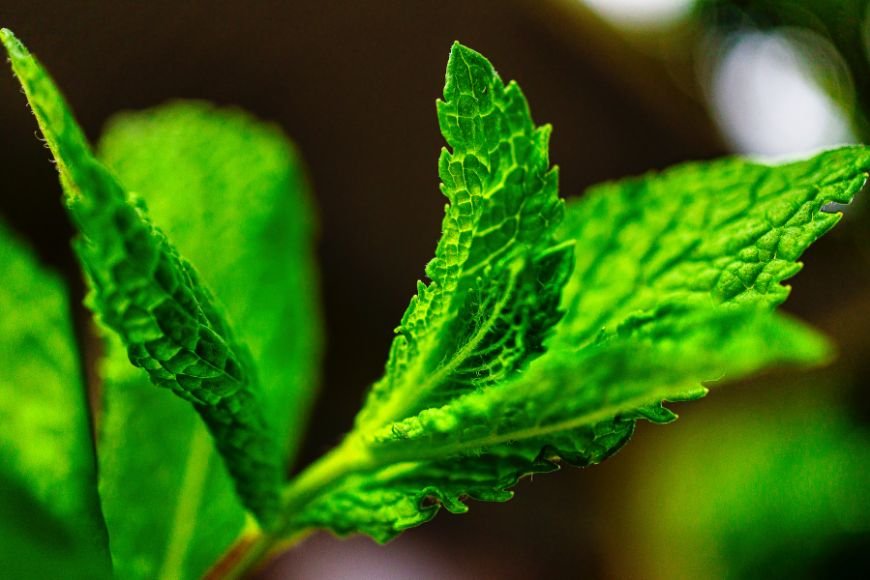Wintergreen mint is a popular herb that people have used for centuries, especially for medical purposes.
Wintergreen mint plants, or Gaultheria procumbens, are shrubs that grow in the eastern parts of North America, namely the U.S. and Canada. You can extract minty essential oils with a refreshing aroma and cooling effects on the skin from their leaves.
So, why is this plant so popular? What are the best ways you can use it? And does it have any side effects? Keep reading for the answers to all these questions.
Benefits of Wintergreen Mint

Wintergreen mint has a wide range of benefits and uses. It’s commonly used as a natural pain reliever since it has high concentrations of methyl salicylate, which can reach up to 85% or even 99% of the essential oil.
This chemical has anti-inflammatory properties that help reduce pain and swelling.
Pain Relief
Methyl salicylate is a close relative of aspirin and has similar anti-inflammatory and analgesic properties. That’s why a lot of topical pain relief medicines include it in their formulas.
It can counter the symptoms of headaches, colds, tooth decay, sore throats, skin conditions, and bacterial infections.
The essential oil can also help you get rid of joint pains from arthritis or rheumatism. You can use it to relieve chronic neck pain, lower back pain, or sore muscles.
Respiratory Relief
Besides relieving pain, wintergreen mint also reduces congestion and swelling, along with the fever that accompanies most illnesses.
You can use the essential oil the same way you would use store-bought vapor rub. Mix it with some coconut oil and rub it into your chest and upper back.
Digestive Health
Wintergreen mint can help relieve digestive issues such as indigestion, bloating, and gas.
The compounds in it improve the absorption of nutrients, mainly by increasing stomach acid and juices.
Moreover, it’s an effective treatment against nausea since its relieving effects help reduce muscle spasms around the gastric lining and colon.
That’s why integrating a small amount of wintergreen mint into your daily diet can leave you feeling lighter and more energized.
Uses of Wintergreen Mint
There’s a wide range of possibilities when it comes to using wintergreen mint, and here are a couple of ideas.

Culinary Uses
Wintergreen mint is a popular ingredient in natural flavorings in the food industry. It’s commonly used in the production of candy, chewing gum, and breath mints.
Plenty of candies use it, such as Wint O Green, O-Green breath mints, Pep-O-Mint breath mints, and Lion mint rolls.
Moreover, the minty flavor is an excellent addition to enhance the artificial flavor of liqueurs, such as crème de menthe.
It can also go into savory dishes like soups and stews to add more flavor. Alternatively, you can use it to marinate meats or make sauces.
However, you should use it in moderation, as excessive use might lead to digestive issues.
Insect Repellent
If you’re going on a camping trip or a hike, some wintergreen mint essential oil is your best friend.
You can apply it to your skin to drive insects, such as mosquitoes, away from you and avoid other biting insects.
Everyday Items
Wintergreen mint can be integrated into several everyday items, and you can even make your homemade toothpaste or mouthwash.
The essential oil gets rid of mouth irritants and odor-causing bacteria, which freshens your breath and also protects your teeth and gums from common infections.
All you have to do is add a drop or two to some water, gargle for half a minute or a full minute, and then rinse.
Hair and Skin Treatments
Mixing some wintergreen mint with jojoba oil or coconut oil can eliminate swollen, red, or itchy skin. Applying it to your scalp leaves you with a fresh scent while removing bacteria, dandruff, and greasiness.
On the other hand, you can use it to get rid of acne, as it kills germs on the skin that can find their way through open pores, causing infections.
Add to that, you can use it to help the skin absorb other drugs and treatments, as wintergreen mint is known to help those chemicals penetrate the skin more easily.
Side Effects of Wintergreen Mint
Despite its numerous benefits, wintergreen mint can have some side effects, especially with improper use.
To start with, it can be toxic if ingested in large quantities. It can also cause skin irritation if you apply it directly to your skin.
That’s why you should always use wintergreen mint in moderation and follow the recommended guidelines for use.
Allergic Reactions
Some people can be allergic to wintergreen mint, so make sure that you test it well before use. Allergic reactions can include swelling, itching, hives, and difficulty breathing.
You should seek immediate medical attention if you go through any of those symptoms after the use or consumption of wintergreen mint.
Drug Interactions
Consuming large amounts of wintergreen mint or applying it to the skin can increase the risk of bleeding, especially if you consume it with blood-thinning medications such as aspirin or warfarin.
In addition, it can interact negatively with other medications such as diuretics, antibiotics, and antacids.
That’s why you should use the ingredient with caution and moderation, and it’s best to consult with a professional if you’re going to be consuming large amounts of wintergreen mint, whether orally or topically.
Is Wintergreen Mint the Same As Peppermint?

No, but they both have a sweet and fresh scent that is similar to one another.
Wintergreen leaves don’t have any smell or taste. What produces them is the enzymatic hydrolyzation of the gaultherin compound in the leaves. This produces methyl salicylate, which is what gives the essential oil the minty aroma everyone loves.
Similar to peppermint, wintergreen mint is widely used in beauty products, household products, aromatherapy, teas, and foods.
Final Words
Wintergreen mint is a natural herb with many respiratory and digestive health benefits. It also acts as a natural pain reliever and has various cosmetic uses.
With careful usage, you should harness all of those benefits, just make sure to avoid improper usage that can lead to skin irritation and allergies.

